#diverse wildlife
Text

Embark on a journey like never before with our comprehensive 2024 guide to Ba Be National Park. Immerse yourself in the untouched beauty of lush landscapes, pristine lakes, and diverse wildlife. Discover hidden gems, trek through ancient forests, and experience the rich culture of local communities. Packed with invaluable tips and insights, this handbook is the key to an unforgettable adventure. Unearth the secrets of Ba Be National Park and create memories that will last a lifetime.
#Ba Be National Park#Ba Be National Park in Vietnam#2024 guide explorer's handbook#untouched beauty#pristine lakes#diverse wildlife#hidden gems#ancient forests
0 notes
Text
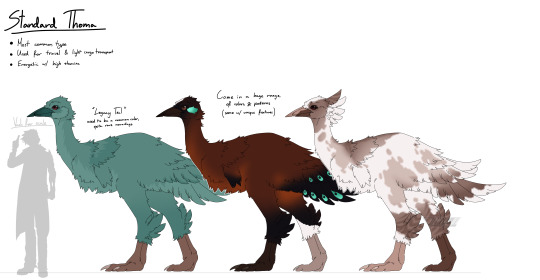
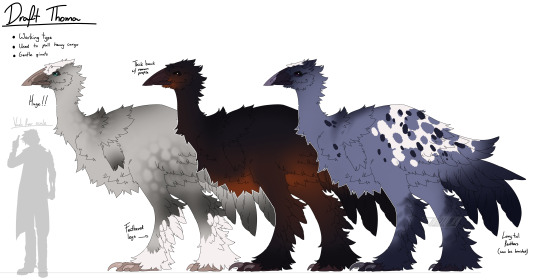

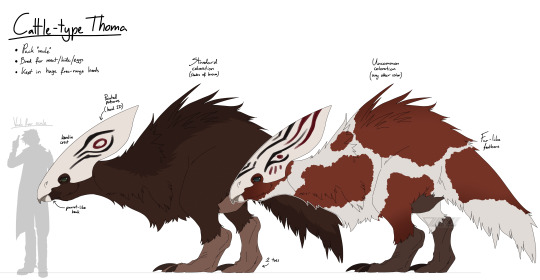
cowboy au worldbuilding with the thoma
as you can see im taking some creative liberties with the giant emu by making them more diverse bc canon isnt enough for me and i have the brainworms
extra notes below the cut
standard thoma:
the original thoma and most common type available
perfect for travel, can pull wagons or carry light cargo
fast with good stamina, fastest over short distances
friendly, intelligent, energetic and quick to learn
the most diverse in terms of colors, patterns and extra traits
well rounded in all departments (theyre like the AQ horses of trigun)
draft thoma:
uncommon outside of major cities (kept by specialized breeders)
used for construction work and long haul heavy cargo transport
gentle, patient and eager to work
not built for speed but can walk for days at a steady pace without rest
dense feather coat protects them from the heat and sand
expensive to maintain and keep due to their size
theyre a relatively new type that came from selective breeding
"wild" thoma:
actually feral (aka. previously domesticated), not wild
originating from lost/runaways that have not been in contact with humans for generations
rare and elusive with a small population, sometimes spotted living near shipwrecks
people will pay top $$ for their capture
begin to exhibit adaptive mutations that help them survive the wastelands
smaller and less fluffy than their standard counterparts
dont come in many colors, mostly bays, chestnuts and blacks
hardy with incredible endurance
very stubborn, temperamental and intelligent, cant be forced to do something they dont want (like donkeys)
rarely ridden, mostly kept for crossbreeding
cattle-type thoma:
related to the standard thoma but NOT the same species
common pack animal in caravans, sometimes ridden as a cheaper alternative to the standard thoma
mainly bred for meat, hide and eggs
kept in huge open range herds that travel along worm swarms for feeding
sometimes kept as a form for anti-worm pest control
keratin crests are lightweight and used for protection and display
ranchers will paint patterns on their crests as a form of identification
not the sharpest tools in the shed, tend to bite and trample people
#trigun#trigun stampede#cowboy au#worldbuilding#andr0art#i like speculative biology idk what to tell you#its the brainworms#sorry for the horrible handwriting btw#also ik that significant adaptive mutations take longer to appear than a 100 years#but lets say they adapt fast due to genetic modification#the implications of what seeds did after the fall to adapt to the wastelands fascinates me#since thoma arent native to no mans land iirc#did they just have them on board?#what ab other animals?#what kind of non-native wildlife is there#i know there are birds and like... a cat#<- still hasnt read trimax#everything i know has been obtained via tristamp and osmosis#also yes im bringing in the og thoma#diversity win!#i needed a substitute for cows so vash and wolfwood have something to herd for cash#living the cowboy dream baby!
505 notes
·
View notes
Text
i will say im a windclan moor >>> windclan prairie truther in my heart but i also think looking at "warrior cats is set in the new forest/england/the uk" and going "no it's not. it's actually set wherever i live" is awesome so whatever. whatever you think is right and whatever i think is right. 10 billion creative and inspired by personal experience warrior cats settings forever
#USamerican fans you guys may be oversaturating the headcanon department due to how many of you there are#but it's not like the series' setting is concrete anyways and also fuck england#if the series was set somewhere in the usa the wildlife would be way more diverse and interesting at least#and who is anyone to rob someone of going to some sort of open field or plain or hill near them and going wow...... windclan territory#that being said heather and gorse is pretty#also to be clear this isnt meant to be dismissive of anyones opinions on this rather just accepting of Them All#if youre very passionate about the sanctity of english warrior cats then i also respect that#i just think arguments about beavers/mountain lions or whatever is silly when everyone is bringing their own vision
88 notes
·
View notes
Text

Gray Wolf Pups
Center for Biogical Diversity
#center for biological diversity#photographer#gray wolf pups#pups#wolf#animal#mammal#wildlife#nature
212 notes
·
View notes
Text
A pair of conservation coalitions on Monday made good on their threats to sue the U.S. government over its denial of federal protections for gray wolves in the northern Rocky Mountains, where state killing regimes "put wolves at obvious risk of extinction in the foreseeable future."
The organizations filed notices of their plans for the lawsuits in early February, after the U.S. Fish and Wildlife Service (FWS) determined that Endangered Species Act protections for the region's wolves were "not warranted." The Interior Department agency could have prevented the suits in the U.S. District Court for the District of Montana by reversing its decision within 60 days but refused to do so.
"The Biden administration and its Fish and Wildlife Service are complicit in the horrific war on wolves being waged by the states of Idaho, Wyoming, and Montana," declared George Nickas, executive director of Wilderness Watch, one of 10 organizations represented by the Western Environmental Law Center (WELC).
"Idaho is fighting to open airstrips all over the backcountry, including in designated Wilderness, to get more hunters to wipe out wolves in their most remote hideouts," Nickas noted. "Montana is resorting to night hunting and shooting over bait and Wyoming has simply declared an open season."
Brooks Fahy, executive director of Predator Defense, another WELC group, pointed out that "these states are destroying wolf families in the Northern Rockies and cruelly driving them to functional extinction via bounties, wanton shooting, trapping, snaring, even running over them with snowmobiles. They have clearly demonstrated they are incapable of managing wolves, only of killing them."
KC York, founder and president of Trap Free Montana, also represented by WELC, said that "Montana, Idaho, and Wyoming know that they were let off the hook in their brutal and unethical destruction of wolves even acknowledged as such by the service."
"They set the stage for other states to follow," York warned. "We are already witnessing the disturbing onset of giving the fox the key to the hen house and abandoning the farm. The maltreatment is now destined to worsen for these wolves and other indiscriminate species, through overt, deceptive, well-orchestrated, secretive, and legal actions."
The other organizations in the WELC coalition are Alliance for the Wild Rockies, Friends of the Clearwater, International Wildlife Coexistence Network, Nimiipuu Protecting Our Environment, Protect the Wolves, Western Watersheds Project, and WildEarth Guardians.
The second lawsuit is spearheaded by the Center for Biological Diversity, Humane Society of the United States, Humane Society Legislative Fund, and Sierra Club, whose leaders took aim at the same three states for their wolf-killing schemes.
"The states of Montana, Idaho, and Wyoming act like it's 1880 with the most radical and unethical methods to kill as many wolves as possible in an effort to manage for bare minimum numbers," said Sierra Club northern Rockies field organizer Nick Gevock. "This kind of 'management' is disgraceful, it's unnecessary, and it sets back wolf conservation decades, and the American people are not going to stand by and allow it to happen."
Margie Robinson, staff attorney for wildlife at the Humane Society of the United States, stressed that "under the Endangered Species Act, the U.S. Fish and Wildlife Service cannot ignore crucial scientific findings. Rather than allow states to cater to trophy hunters, trappers, and ranchers, the agency must ensure the preservation of wolves—who are vital to ensuring healthy ecosystems—for generations to come."
The Center for Biological Diversity's carnivore conservation program director, Collette Adkins, was optimistic about her coalition's chances based on previous legal battles, saying that "we're back in court to save the wolves and we'll win again."
"The Fish and Wildlife Service is thumbing its nose at the Endangered Species Act and letting wolf-hating states sabotage decades of recovery efforts," Adkins added. "It's heartbreaking and it has to stop."
#ecology#enviromentalism#biden administration#us politics#let wolves live#wolves#endangered species act#us fish and wildlife service#wildlife services#wildlife#Fuck Wildlife Services#montana#idaho#wyoming#department of the interior#center for biological diversity
3 notes
·
View notes
Text
Exploring the Peranakan Culture in Singapore

The vibrant tapestry of Singapore's cultural landscape is incomplete without the rich threads of Peranakan heritage. Just as the nocturnal Wildlife Park Singapore beckons nature enthusiasts, the term "Peranakan" refers to the descendants of Chinese immigrants who came to the Malay Archipelago, including Singapore, during the 15th to 17th centuries. This unique cultural fusion has given rise to a distinct Peranakan identity that encompasses aspects of Chinese, Malay, and Indonesian traditions. Amidst the hustle and bustle of the city, akin to the thrill of the reverse bungee in Singapore, the Peranakan culture stands as a captivating testament to the harmonious blend of diverse influences in this vibrant metropolis.
Historical Background
Early Migration: The Peranakan story begins with the migration of Chinese communities to the Malay Archipelago. These early settlers intermarried with local Malays, resulting in a harmonious blend of cultural practices.
Cultural Fusion: The Peranakan culture stands as a testament to the amalgamation of Chinese, Malay, and Indonesian influences. The fusion extends beyond mere culinary preferences, permeating every aspect of daily life.
Distinctive Peranakan Cuisine
Iconic Dishes: Peranakan cuisine, also known as Nyonya cuisine, is celebrated for its unique blend of flavors. Signature dishes like Laksa, Ayam Buah Keluak, and Kueh Dadar showcase the intricate marriage of Chinese and Malay culinary techniques.
Culinary Traditions: The preparation of Peranakan dishes involves time-honored traditions passed down through generations. The meticulous use of herbs, spices, and indigenous ingredients contributes to the unmistakable Peranakan flavor profile.
Peranakan Art and Craft
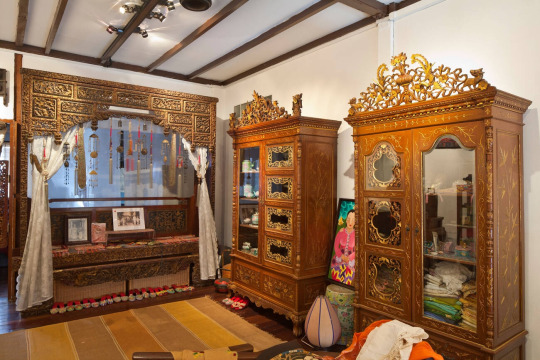
Intricate Designs: Peranakan art is characterized by intricate designs, often seen in textiles, ceramics, and architecture. These designs reflect the cultural diversity and are a visual representation of the Peranakan identity.
Symbolism in Art: Each piece of Peranakan art tells a story. The intricate patterns on porcelain, known as "straits Chinese porcelain," are laden with symbolic meanings, representing prosperity, good luck, and familial ties.
Traditional Peranakan Clothing
Sarong Kebaya: The traditional attire of Peranakan women, the Sarong Kebaya, is a graceful ensemble comprising a kebaya blouse paired with a batik sarong. This attire is a symbol of Peranakan femininity and grace.
Beaded Slippers: Completing the ensemble are beaded slippers known as "kasut manek." These meticulously crafted shoes are a hallmark of Peranakan fashion, showcasing intricate beadwork and vibrant colors.
Architecture and Heritage Homes
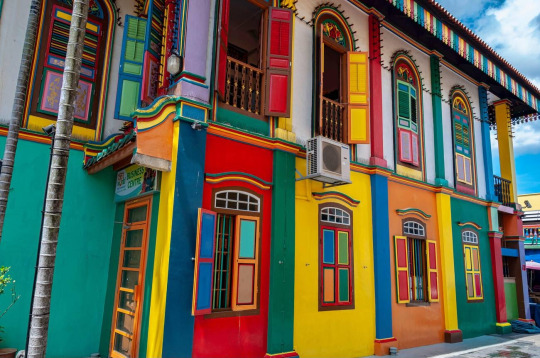
Shophouses and Their Significance: Peranakan influence is also evident in the architecture of shophouses. Elaborate facades, vibrant colors, and ceramic tiles contribute to the distinctiveness of Peranakan-style buildings.
Preserving Peranakan Heritage: Efforts to preserve Peranakan heritage include the restoration and conservation of heritage homes. These initiatives aim to maintain the authenticity of Peranakan architecture for future generations.
Language and Literature
Unique Language – Baba Malay: The Peranakan community developed its own language, known as "Baba Malay." This linguistic blend incorporates elements of Malay, Chinese, and Indonesian, further emphasizing the cultural amalgamation.
Folktales and Stories: The rich oral tradition of Peranakan culture is encapsulated in folktales and stories that have been passed down through generations. These narratives offer insights into the community's history, values, and customs.
Festivals and Celebrations
Peranakan Weddings: Peranakan weddings are elaborate affairs, blending Chinese and Malay wedding customs. Intricate ceremonies, vibrant costumes, and traditional rituals make these celebrations a unique and visually stunning experience.
Lunar New Year Celebrations: The Lunar New Year holds special significance for Peranakans. The festivities include elaborate family reunions, traditional feasts, and the iconic tossing of the yusheng for prosperity and good fortune.
Challenges in Preserving Peranakan Culture
Modernization Impact: The relentless march of modernization poses challenges to preserving Peranakan culture. Changing lifestyles, urban development, and globalization threaten to erode the distinctiveness of this unique heritage.
Efforts for Cultural Conservation: Despite challenges, various initiatives aim to safeguard Peranakan culture. Museums, cultural organizations, and community-driven projects work tirelessly to document, preserve, and celebrate the rich Peranakan legacy.
Peranakan Influence in Modern Singapore
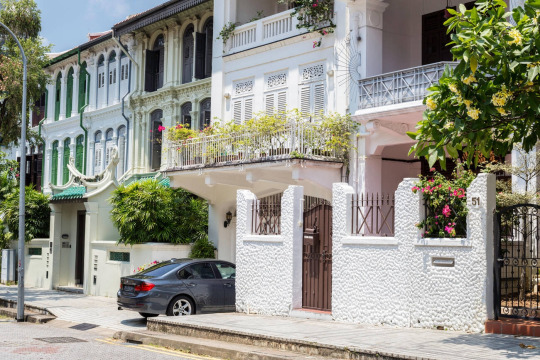
Contemporary Peranakan Culture: The Peranakan influence extends beyond traditional boundaries. Today, Peranakan culture is embraced in contemporary settings, influencing fashion, design, and culinary trends in modern Singapore.
Popular Peranakan Establishments: The popularity of Peranakan cuisine has led to the establishment of renowned Nyonya restaurants and Peranakan-inspired cafes. These establishments not only showcase the culinary heritage but also serve as hubs for cultural exchange.
Tourism and Peranakan Experience
Peranakan Museums: Museums dedicated to Peranakan culture offer visitors a deep dive into the history, art, and traditions of the community. The artifacts and exhibits serve as a testament to the resilience and vibrancy of Peranakan heritage.
Cultural Tours: Guided cultural tours provide an immersive experience, allowing visitors to explore Peranakan neighborhoods, sample authentic cuisine, and witness the living traditions that continue to thrive in the community.
Personal Narratives
Interviews with Peranakan Community Members: Personal narratives from members of the Peranakan community offer a unique perspective. Interviews highlight the challenges faced, the pride in preserving culture, and the ongoing efforts to pass down traditions to future generations.
Stories of Cultural Preservation: Heartwarming stories of individuals and communities actively engaged in preserving Peranakan culture showcase the resilience and determination to ensure that this rich heritage remains alive and thriving.
Conclusion

In the tapestry of Singapore's multicultural identity, the Peranakan culture weaves a vibrant and colourful thread. From its humble beginnings to the challenges of modernization, the Peranakan community stands resilient, proudly preserving its unique heritage. As we explore the intricate blend of traditions, art, cuisine, and personal narratives, it becomes evident that Peranakan culture is not just a relic of the past but a living, breathing entity shaping the cultural landscape of contemporary Singapore.
#Peranakan Culture#Singapore Heritage#Chinese-Malay Fusion#Nyonya Cuisine#Peranakan Art#Sarong Kebaya#Straits Chinese Porcelain#Shophouse Architecture#Baba Malay Language#Lunar New Year Celebrations#Cultural Conservation#Modern Peranakan Influence#Peranakan Museums#Cultural Tours#Personal Narratives#Nocturnal Wildlife Park Singapore#Reverse Bungee in Singapore#Singapore Tourism#Cultural Diversity#Unique Singapore Experiences#Peranakan Cultural Preservation
5 notes
·
View notes
Text
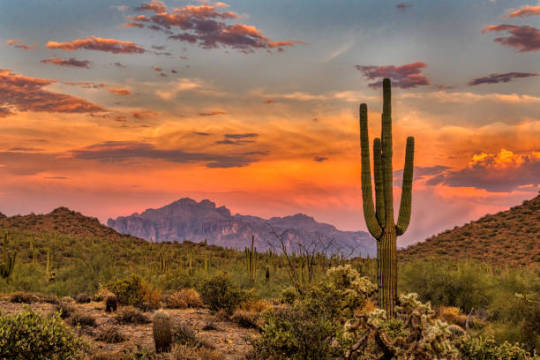
Discovering the Beauty of Deserts: Exploring the Wonders of Arid Landscapes
Deserts are often associated with barren and lifeless landscapes, but in reality, they are some of the most diverse and beautiful regions on Earth. From sand dunes to canyons, deserts offer a unique and breathtaking experience for those who venture into them. In this post, we'll explore the beauty of deserts and provide tips for exploring these amazing regions.
Start with the classics: The deserts of the American Southwest, such as the Grand Canyon and Joshua Tree National Park, offer a great introduction to the beauty and diversity of desert landscapes.
Explore lesser-known areas: Deserts cover about one-third of the Earth's surface, and there are many lesser-known regions that offer a unique and breathtaking experience. Examples include the Namib Desert in Africa, the Atacama Desert in South America, and the Gobi Desert in Asia.
Plan for extreme temperatures: Deserts can be extremely hot during the day and very cold at night. Plan accordingly and bring plenty of water and sunscreen to avoid dehydration and sunburn.
Take a guided tour: Guided tours offer a chance to learn about the history and ecology of the desert, as well as explore hard-to-reach areas. Many guided tours also provide off-road vehicles or camels to help navigate the terrain.
Enjoy the stars: The desert offers some of the best stargazing opportunities in the world. Bring a telescope or simply lie on a blanket to marvel at the vast expanse of the night sky.
Respect the environment: The desert environment is fragile, and it's important to respect it. Avoid disturbing wildlife and follow responsible camping and hiking practices to minimize your impact on the environment.
Deserts offer a unique and unforgettable experience for travelers who seek adventure, natural beauty, and cultural immersion. By following these tips, you can discover the wonders of this amazing region.
#deserts#adventure#explore#naturalbeauty#guidetours#extremetemperatures#stargazing#respecttheenvironment#AmericanSouthwest#NamibDesert#AtacamaDesert#GobiDesert#diverse#landscape#ecology#wildlife
5 notes
·
View notes
Text
This New Park Gives Different Views of the Grand Canyon—with No Crowds
These sacred Indigenous lands in Arizona just got government protection. Here’s how to explore their hikes, wildlife, and impressive vistas.
— By Joe Yogerst | September 1, 2023

Red Butte, which the Havasupai people call Wii'i Gdwiisa (“Clenched Fist Mountain”), is one of many sacred Indigenous sites within Arizona’s new Baaj Nwaavjo I’tah Kukveni Grand Canyon National Monument. Named a national monument by President Joseph Biden in August 2023, the one-million-acre wilderness offers hiking, backcountry camping, and views of the Grand Canyon without the crowds. Photograph By Taylor McKinnon, Center For Biological Diversity
Grand Canyon National Park draws 4.7 million visitors a year to the northwest corner of Arizona to hike, camp, or watch wildlife. But most of them don’t realize that the lands within and surrounding the park are sacred to the region’s 12 Indigenous tribes, which include the Havasupai, Hopi, Navajo, and several bands of Paiute.
That changed on August 8 when President Joseph Biden signed a decree creating the Baaj Nwaavjo I’tah Kukveni—Ancestral Footprints of the Grand Canyon National Monument. Sprawling across more than 960,000 acres directly north and south of the national park, the new monument offers more rugged, less crowded recreation than its neighbor. It also provides a view of the landscape through Indigenous eyes.
“Baaj nwaavjo in Havasupai means ‘where the ancient people roamed,’” says Carletta Tilousi, coordinator of the Grand Canyon Tribal Coalition. “I’tah kukveni is the Hopi translation of ‘ancestral footsteps’. This reaffirms their creation stories.”
Here’s how the monument came to be, and how to explore it.
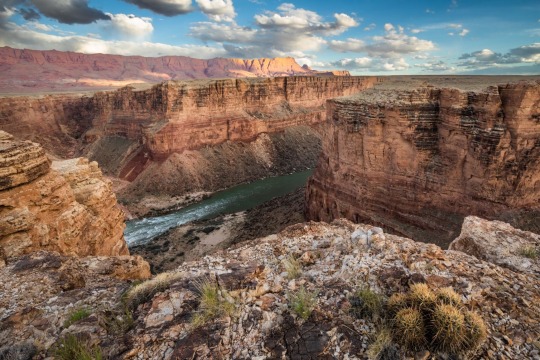
Baaj Nwaavjo I’tah Kukveni yields views of the Colorado River and Grand Canyon from a different perspective. Photograph By Amy S. Martin
How to Make a National Monument
It took two million years for the Grand Canyon itself to form and around 40 years for Baaj Nwaavjo I’tah Kukveni to become reality. “The protection for these lands is something the tribes have focused on since as far back as the 1980s,” says Amber Reimondo of the Grand Canyon Trust, a nonprofit devoted to preserving the region.
Many of these Indigenous people were expelled from their territory when Grand Canyon National Park was established in 1919. They campaigned for decades to receive stronger protection for their lands around the park, overcoming entities that wanted fewer legal obstacles to development and mining. After President Biden’s election in 2020, the 12 tribes formed a coalition which led to the lands receiving federal status.

Though the National Park Service oversees Grand Canyon National Park, monuments such as Baaj Nwaavjo I’tah Kukveni are run by the U.S. Forest Service (USFS) and the Bureau of Land Management (BLM). Monuments generally have fewer restrictions regarding their use (e.g., sometimes hunting or logging is allowed), as well as fewer facilities for visitors.
Fewer Amenities, Fewer Crowds
Like many national monuments, Baaj Nwaavjo I’tah Kukveni exudes raw nature. It has no bathrooms or visitor center; access is primarily via dirt roads or rough trails; you’ll need a four-wheel-drive to reach many sections of the park.
What it offers is solitude and peace amid the forests and grasslands of northern Arizona. You can gaze at the Grand Canyon without thousands of other people jostling for the same space, hike trails where yours are the only footsteps, and make camp at secluded spots. Plus you might encounter wildlife such as elk, black bear, mule deer, birds, or bison.
That solitude is also important to the Indigenous people. Tilousi says that when she visits the busy South Rim inside Grand Canyon National Park, “It’s very difficult for me to find a spot where I can offer prayers and offerings in a quiet way.” She feels that won’t be an issue in the off-the-beaten-track lands of the new monument.

Native plants including yucca flourish within Baaj Nwaavjo I'teh Kukveni National Monument. Photograph By Amy S. Martin
Exploring the Monument
The vast wilderness of Baaj Nwaavjo I’tah Kukveni is divided into three distinct sections or parcels, each with its own appeal.
The southernmost section, the Tusayan Ranger District/South Parcel, is the easiest to explore. Comprising 330,000 acres within the Kaibab National Forest, its pine woodlands and sagebrush prairie are accessible via Forest Service roads or Sections 35 through 37 of the Arizona Trail, an 800-mile hiking route stretching across the entire state.
The South Parcel also shows signs of human life, including the rusty hangar of the 1920s Red Butte Airfield and the 80-foot-tall Grandview Lookout Tower, which you can climb for views of the Colorado Plateau and the Grand Canyon.
The other sections of the monument, Kanab Plateau/Northwest Parcel and Rock House Valley/Northeast Parcel, are located beyond the North Rim section of Grand Canyon National Park.
“It's a big, remote wilderness,” says Michael Cravens, advocacy and conservation director of the Arizona Wildlife Federation. “I’ve never in my life been somewhere with night skies that spectacular.” But he cautions visitors “to be careful and prepared” for the extreme weather and topography. You can reach the northern parcels on BLM roads south of U.S. Highway 89A.

The vast House Rock Valley stretches through a portion of the new national monument. Photograph By Taylor McKinnon, Center For Biological Diversity
Stretched across the Kanab Plateau and Antelope Valley, the Kanab Plateau section has hiking routes through spectacular side canyons and to panoramic views such as Gunsight Point.
The Hack Trail drops down into the Kanab Creek Wilderness with its enormous red-rock canyons, a landscape almost as impressive as the Grand Canyon itself. Experienced hikers can continue down Kanab Creek to the Colorado River or along other trails to vertiginous overlooks along the North Rim.
Set beneath the Vermilion Cliffs National Monument, the Rock House Valley section of Baaj Nwaavjo I’tah Kukveni tumbles across sagebrush flats to the edge of Marble Canyon. Rugged hiking trails here include the Soap Creek Trail, which winds down from the Rapids/Badger Camp Overlook to a primitive campsite near the river.
Rough roads lead south to viewpoints for Rider Canyon, South Canyon, and other offshoots of the Grand Canyon. Here, you might even spot the North Rim’s resident bison herd, brought to the Arizona Strip in 1906 by Charles “Buffalo” Jones as part of efforts to save the species.
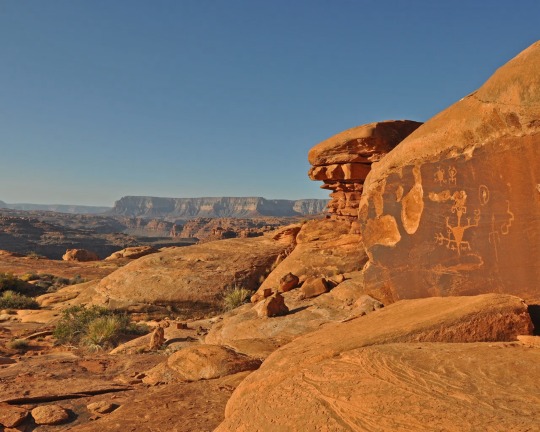
Ancient rock art can be spotted in the Kanab Creek Wilderness portion of Baaj Nwaavjo I’tah Kukveni National Monument. Photograph By Natpar Collection, Alamy Stock Photo

The Havasupai Indian Reservation in Arizona, which includes the Havasu Waterfall—part of the Havasupai Falls—is the current home of the Havasupai people. After the Grand Canyon became a national park, they were forcibly removed from their traditional homelands in the canyon and in nearby lands that will be part of the new national monument. Photograph By Mike Theiss National Geographic Image Collection
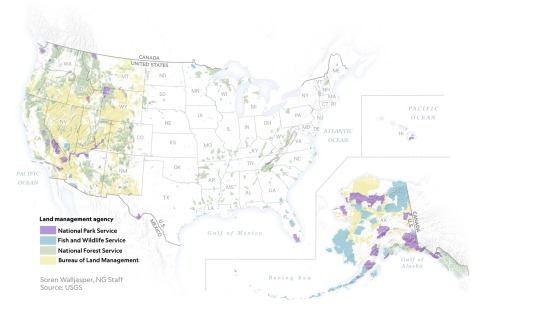
1 Million Acres of ‘Sacred’ Land Near Grand Canyon are Receiving New Protections! The designation of the land as a national monument, confirmed to National Geographic this week by the White House, will prevent new uranium mines and protect historically significant tribal lands.
#United States 🇺🇸 National Parks#New Park#Grand Canyan#Indigenous Lands#Arizona#Wildlife#Red Butte | Clenched Fist Mountain#Arizona | Baaj Nwaavjo I’tah Kukveni Grand Canyon National Monument#Center For Biological Diversity#President Joe Biden#Carletta Tilousi | Coordinator | Grand Canyon Tribal Coalition#Ancestral Footprints#Colorado River#Amber Reimondo | Grand Canyon Trust | Non-profit | Region Preservation#National Park Service#U.S. Forest Service (USFS) | The Bureau of Land Management (BLM).#Wildlife | Elk | Black Bear 🐻 | Mule | Deer 🦌 | Birds 🦅 | Bison 🦬#Hike Trails#Off-The-Beaten-Track Lands#Tusayan Ranger District | South Parcel#Kaibab National Forest 🌳#Colorado Plateau#Kanab Plateau/Northwest Parcel | Rock House Valley/Northeast Parcel#U.S. Highway 89A#Michael Cravens | Arizona Wildlife Federation#Kanab Plateau | Antelope Valley#Gunsight Point#Hack Trail#Vermilion Cliffs National Monument#Rock House Valley
3 notes
·
View notes
Text
Oriental Magpie Robin from my balcony
Also in the blog now:
Small Batch BrowniesBlack and White birds from my balconyRose Ringed Parakeets from my balconyBreakfast plate dosai waffles sundal
Check out my Instagram profile and highlights for more pics and recipes – @Fhareena #parveenskitchen #foodblogger

View On WordPress
#Asian birds#avian#backyard biodiversity#Backyard Birding#balcony#beautiful birds#bird#Bird Behavior#bird conservation#bird diversity#bird enthusiasts#Bird Identification#bird lovers#bird photography#Bird Species#bird watching from home#birding hobby#birds#Birdwatching#capturing wildlife#city birds#city dwellers#colorful birds#feathered friends#garden visitors#magpie robin#nature#nature in the city#observing nature#oriental magpie Robin
3 notes
·
View notes
Text
🦌🎶 The Voice of Nara: Exploring the Unique Sika Deer Sounds🎶🦌
🦌 Step into the enchanting world of Nara, Japan, where ancient culture meets the mesmerizing language of Sika deer. 🇯🇵🌸...
🔍 The Whistle of Caution 🔔 As the sun casts a warm glow over Nara Park, the Nara deer's keen sense of alertness is evident in their gentle whistles. 🌞🔉...
😊 The Snort of Curiosity 😄 One of the highlights of visiting Nara is the heartwarming interaction with the friendly Sika deer! 🥰🦌...
🎶 The Whistle of the Rut 🦌🍁 As autumn arrives, Nara Park witnesses a captivating transformation within its deer community. The rutting season begins, and the park comes alive with melodious whistles of the male Sika deer! 🍂🍃...
Don't miss this incredible journey through the captivating language of the Sika deer! 🦌🗣️...
Check out my blog for more information about Nara and the Deers!
#Sika deer#Nara#Japan#Nara Park#Deer vocalizations#Whistling deer#Deer sounds#Rutting season#Wildlife in Nara#Nara deer experience#Sika deer behavior#Deer courtship calls#Wildlife encounters#Sika deer adaptations#Deer communication#Red deer bugle calls#White-tailed deer vocalizations#Fallow deer barks#Moose grunts#Deer species diversity#Keystone species#Nature's language#Wildlife symphony
6 notes
·
View notes
Text
Wild Neighbors: Antlers, Feathers & Paws Unveiled
Discover the fascinating world of "Wild Neighbors: Antlers, Feathers & Paws Unveiled"! Immerse yourself in the wonders of wildlife in central New Hampshire. Join us on this extraordinary journey into the heart of nature's domain.
Welcome to The Earthy Alchemist’s first installment of “Wild Neighbors: Antlers, Feathers & Paws Unveiled,” where we embark on a captivating journey into the enchanting world of wildlife thriving right on our doorstep at Marleywood, nestled in central New Hampshire. No need for hiking boots or mosquito netting, and leave your pack behind – just grab a tasty beverage, sit back, and let’s set out…

View On WordPress
#Animal Behavior#animals#Earthy Alchemist#Marleywood#My New Hampshire Life#nature#Nature Enthusiast#New Hampshire#Outdoor Exploration#Wilderness Adventures#wildlife#Wildlife Awareness#Wildlife Conservation#Wildlife Conservation Efforts#Wildlife Discoveries#Wildlife Diversity#Wildlife Education#Wildlife Encounters#Wildlife Habitats#Wildlife Photography#Wildlife Sanctuary#Wildlife Stories#Wildlife Watching
2 notes
·
View notes
Text
i’m on vacation and visiting family rn and we went to the beach and holy fUCK there were not one, but two lemon sharks and a whole ass sting ray !!!!!! i’m gonna be honest i almost cried i was so excited
#my aunt’s boyfriend is very very cool and goes night fishing a lot and catches a lot of rlly cool fish#and he said he’s gonna snag my siblings and my cousins and i and take us fishing#he’s also got land on a rlly cool and very biologically diverse lake that we can go out n see#i might be able to drag my sister to the tidal pools and see whatever wildlife pops up there#if u can’t tell i am obsessed w marine life
2 notes
·
View notes
Text
Actually there was an Avatar (the James Cameron one) fandom and I remember they were quite controversial because some where very vocal about how they were depressed because Pandora was soooooo beautiful and nothing in real life could compare.
Guess they never watched Animal Planet in their lives.
(if you see Avatar 2 trailer, all the shots are almost directly imitating nature documentaries anyways, if you change some scenes it's almost taken from Planet Earth or Prehistoric Planet)
#cosas mias#real life nature is so much more diverse and bizarre and even the cooler parts of Avatar were basically inspired by actual wildlife#only they added more bioluminisce and blue furries
13 notes
·
View notes
Photo

More than a million species of wild flora and fauna are at risk of extinction.
Friday's World Wildlife Day is an opportunity to draw attention to the importance of collective action and cooperation to create more sustainable relationships between humans, nature and wildlife.
See how YOU can help: https://wildlifeday.org/en
(From the United Nations official Linked In page)
#art#wildlife#diverse characters#poc characters#lemur#manta ray#staghorn beetle#beetle#humpback whale#canoe#snakes#butterfly#hummingbird#tigers#fennec fox#toucan#magnolia#tropical#tropical plants
3 notes
·
View notes
Photo

Mouse
Center for Biological Diversity
420 notes
·
View notes
Text
Botswana
Botswana, a landlocked country in Southern Africa, offers a unique blend of spectacular wildlife, rich culture, and vibrant history. This travel guide will take you through everything you need to know for an unforgettable visit to Botswana.
Brief History
Botswana, known as Bechuanaland during the colonial period, has a rich history dating back to ancient times with early hunter-gatherer…

View On WordPress
#1966#a landlocked country in Southern Africa#adventure#africa#and has since established itself as one of Africa’s most stable democracies.#and Kasane Airport#and major credit cards are accepted in most hotels#and rabies are recommended. A yellow fever vaccination is required if you are coming from a country with yellow fever. Q: What languages are#and Setswana is the national language widely spoken by the locals. Q: Is it safe to drink tap water in Botswana? A: In major towns and citie#and shops.#and unique cultural heritage. Whether you&039;re seeking adventure in the wild or a serene escape#and various dishes made from millet and maize. Botswana offers an enriching travel experience with its incredible wildlife#and vibrant history. This travel guide will take you through everything you need to know for an unforgettable visit to Botswana.#bogobe (sorghum porridge)#Botswana#Botswana has something for every traveler.#Botswana&039;s main international gateway is Sir Seretse Khama International Airport in Gaborone. Other important airports include Maun Air#Chobe is a haven for wildlife enthusiasts. Moremi Game Reserve: Located in the Okavango Delta#close to Chobe National Park.#destinations#europe#except for citizens of certain countries who are granted visa-free entry. It&039;s advisable to check the latest visa requirements before t#has a rich history dating back to ancient times with early hunter-gatherer communities. It gained independence from British colonial rule on#hepatitis B#hospitable people#in rural areas#it’s advisable to drink bottled or boiled water. Q: What are some must-try foods in Botswana? A: Must-try foods include seswaa (pounded meat#kenya#known as Bechuanaland during the colonial period#Moremi is known for its diverse ecosystems and abundant wildlife. Makgadikgadi Pans: One of the largest salt flats in the world
0 notes